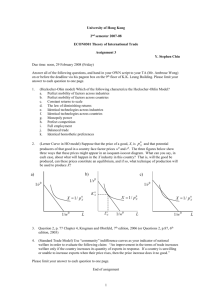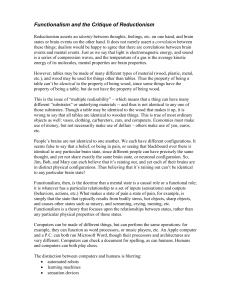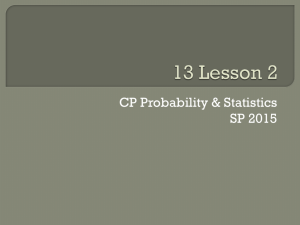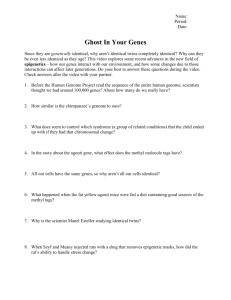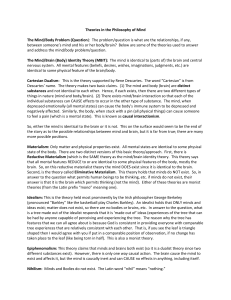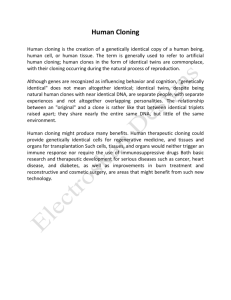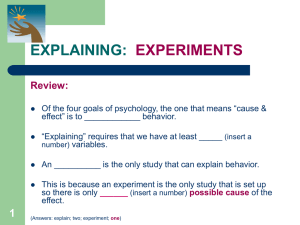Lecture 2
advertisement
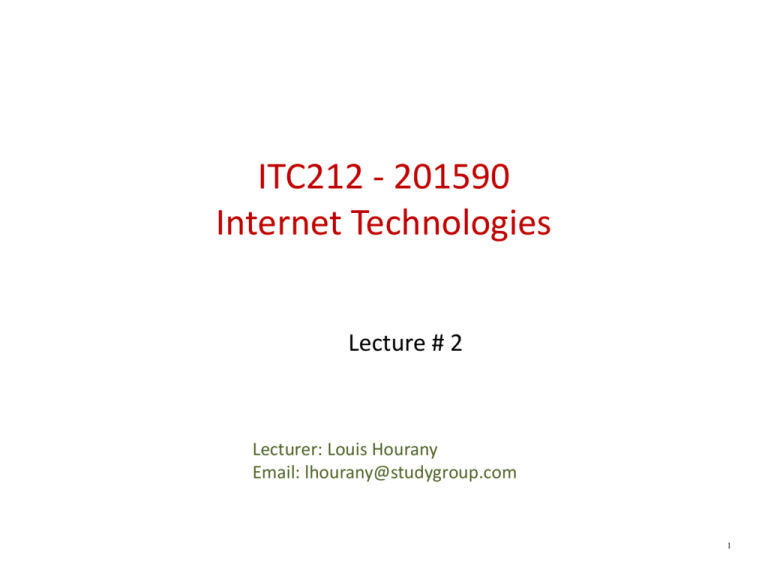
ITC212 - 201590 Internet Technologies Lecture # 2 Lecturer: Louis Hourany Email: lhourany@studygroup.com 1 Agenda • • • • • Data Communication Networks Network Types Standards and Administration Network Layers and their functionalities. 2 Data Communication • Sharing Information • Form of Information ??? – Text – Numbers – Images – Audio – Video 3 Data Communication (continue …) • Data communications are the exchange of data between two devices via some form of transmission media. • Telecommunication, which includes telephony, telegraph, and television, means communication at a distance. 4 Components 5 Data Flow 6 Networks • Interconnection of a set of devices capable of communication 7 Types of Connection 8 Types of Connection (bus topology) 9 Types of Connection (ring topology) 10 Types of Connection (star topology) 11 Types of Connection (mesh topology) 12 Network Types • Different type of network we encounter • Differentiating Criteria size, geographical coverage and ownership • Local Area Network – Privately Owned – Single Office, building or campus • Wide Area Network – A Town, state, a country even whole world – LAN is limited geographically 13 An Isolated LAN in the past and today 14 A Point-to-Point WAN 15 A Switched WAN 16 An internetwork made of two LANs and one WAN 17 Switching • Internet is a switched Network • Switch needs to forward data from a network to another network • Common types of switched networks – Circuit-Switched – Packet-switched 18 A circuit-switched network 19 A packet-switched network 20 internet • internet is two or more networks that can communicate • Internet is composed of thousands of interconnected networks. • The user, however, needs to be physically connected to an ISP 21 The Internet Today 22 Accessing the Internet • Any user can be part of Internet • Users need to be physically connected to ISP • Physical connection is done through point-to-point WAN 23 Internet Standards • Standards and Protocol helps in smooth communication • Standard is thoroughly tested specification that is useful to and adhered to by those who work with the internet • Formalized Regulation • Strict procedure to acquire status of Internet Standard 24 Maturity Levels of an RFC 25 Internet Administration • Roots primarily in the research domain • Achieved commercialization now a days. • Various groups that coordinate Internet issues have guided this growth and development 26 Maturity Levels of an RFC 27 Protocol • Rules for both sender and receiver as well for all the communication • Simple protocol for simple communication • Complex communication, we need protocol at each layer or protocol layering 28 A single-layer protocol 29 A single-layer protocol Postal carrier facility 30 Principles of Protocol Layering • Two important principles of protocol layering 1. If we want bidirectional communication, we need to make each layer so that it is able to perform two opposite tasks in each direction 2. Two objects under each layer at both sites should be identical 31 Logical Connections between Peer Layers 32 Layers in the TCP/IP protocol suit 33 Communication through an internet 34 Identical Objects in the TCP/IP protocol suit Identical objects (messages) Identical objects (segment or user datagram) Identical objects (datagram) Identical objects (datagram) Identical objects (frame) Identical objects (frame) Identical objects (bits) Identical objects (bits) 35 Encapsulation / Decapsulation 36 Addressing in the TCP/IP protocol suit 37 Addressing in the TCP/IP protocol suit 38 OSI model 39 OSI vs TCP/IP 40 Lecture 2 – Part 2 Any questions? 41

